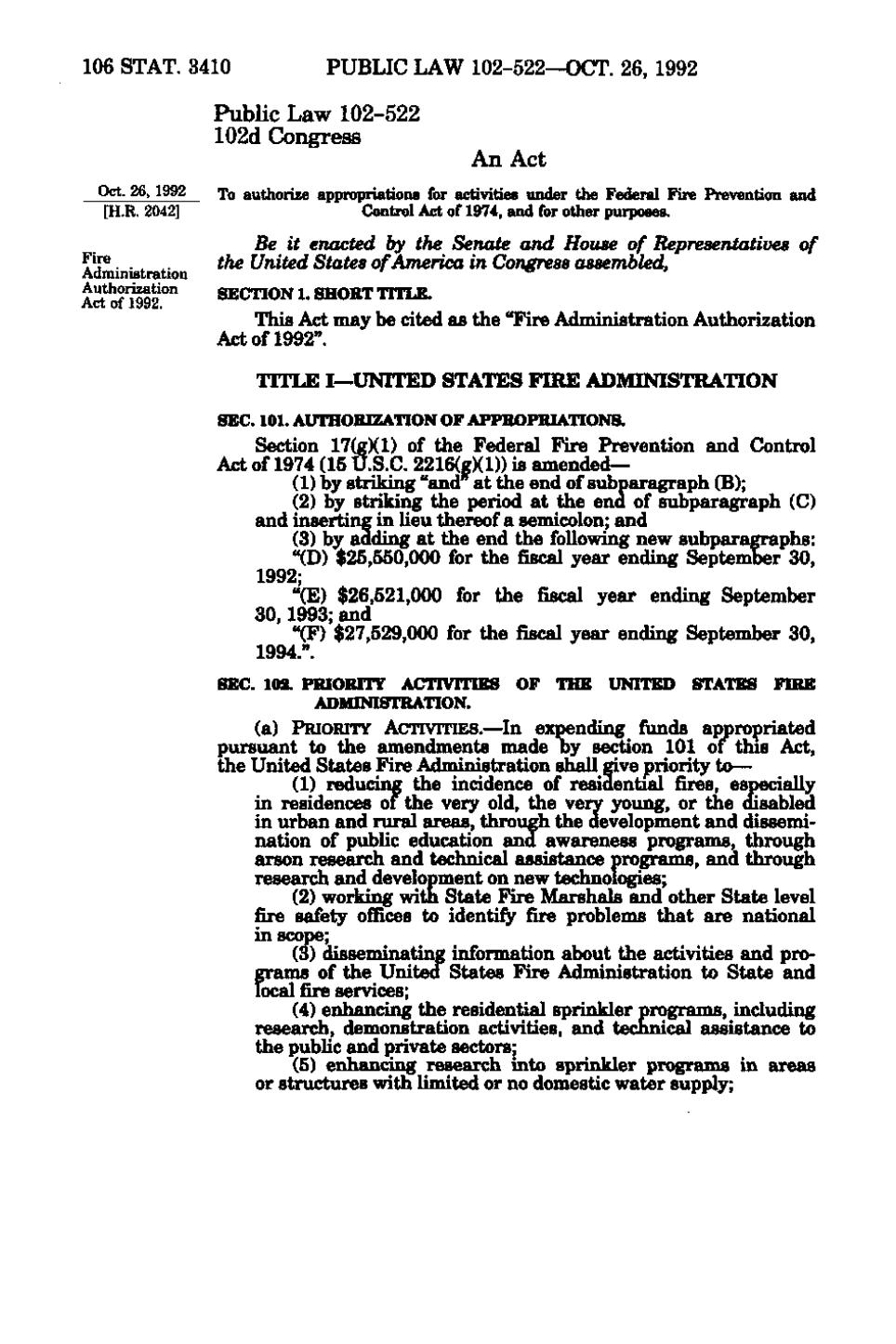106 STAT. 3410 PUBLIC LAW 102-522 —OCT. 26, 1992 Public Law 102-522 102d Congress An Act Oct. 26, 1992 To authorize appropriations for activities under the Federal Fire Prevention and [H.R. 2042] Control Act of 1974, and for other purposes. Be it enacted by the Senate and House of Representatives of ?!r®••J..• the United States of America in Congress assembled. Administration ^"**^f I'SSo °" SECTION 1. SHORT TITLE. Act of 1992. This Act may be cited as the "Fire Administration Authorization Act of 1992". TITLE I—UNITED STATES FIRE ADMINISTRATION SEC. 101. AUTHORIZATION OF APPROPRIATIONS. Section 17(g)(l) of the Federal Fire Prevention and Control Act of 1974 (15 U.S.C. 2216(^X1)) is amended— (1) by striking "and at the end of subparagraph (B); (2) by striking the period at the end of subparagraph (C) and inserting in lieu thereof a semicolon; and (3) by adding at the end the following new subparagraphs: "(D) $25,550,000 for the fiscal year ending September 30, 1992' "(E) $26,521,000 for the fiscal year ending September 30, 1993; and "(F) $27,529,000 for the fiscal year ending September 30, 1994. ". SEC. 102. PRIORITY AdlVITIES OF THE UNITED STATES FIRE ADMINISTRATION. (a) PRIORITY AcnvrriES.— In expending funds appropriated pursuant to the amendments made by section 101 of tms Act, the United States Fire Administration shall give priority to— (1) reducing the incidence of residential fires, especially in residences of the very old, the very young, or the disabled in urban and rural areas, through the development and dissemination of public education and awareness programs, through arson research and technical assistance programs, and through research and development on new technologies; (2) working with State Fire Marshals and other State level fire safety offices to identify fire problems that are national in scope; (3) disseminating information about the activities and programs of the United States Fire Administration to State and local fire services; (4) enhancing the residential sprinkler programs, including research, demonstration activities, and technical assistance to the public and private sectors; (5) enhancing research into sprinkler programs in areas or structures with limited or no domestic water supply;
�
